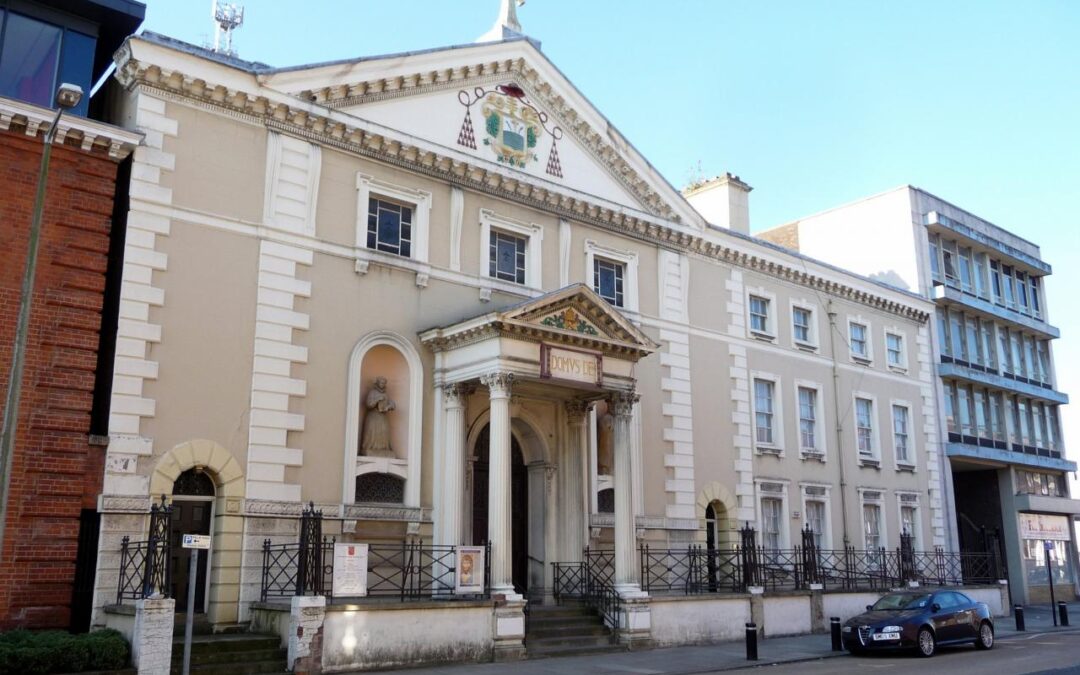Charles Borromeo was the Archbishop of Milan from 1564 to 1584 and a cardinal of the Catholic Church, and has been made so by his uncle, Pope Pius IV, in 1560. He was a key figure in the counter-Reformation movement alongside Phillip Neri and St Ignatius of Loyola (coincidentally St Ignatius is my favourite church in Rome, or at least one of them). I had the pleasure in August of spending a Sunday morning in Hull, where I decided to go to a Catholic church rather than throw caution to the wind and go to the beautiful Minster.
From a rather unassuming exterior, perhaps a hallmark of Hull buildings outside of the Old Town or Queen Victoria Square, the interior is something of a miracle. With beautiful features, a resplendent altar and I believe the part above the altar is called an apse. This for me was a glorious explosion of colour and a lovely depiction of the dove of peace.
Saint Charles Borromeo Catholic Church is the mother church for the city of Kingston-Upon-Hull. From out of this community grew all the other parishes in the city which were created as the Catholic population multiplied and expanded.
Built in 1829 it is the oldest post-Reformation Catholic Church in the diocese of Middlesbrough. It is also Grade 1 listed. It was recently included in Elena Curti’s book, ‘Fifty Catholic Churches to See Before You Die’ which explores some of the great architectural treasures of our nation.
…
The present church was built in 1829. However, the church as it is seen today is really due to the work carried out in the late nineteenth century under the direction of Canon William Sullivan. St Charles Hull
Mass times at the time of writing are Sunday 10am and 6.30pm. I would encourage you to visit this lovely church, in the centre of Hull and near the wonderful Hop and Vine pub. I had a great time and was able to see some beautiful art and sculptures.
Its origins go back to 1779 and to chapels in Posterngate, destroyed in the Gordon Riots, and to North Street (1799). The present church was built in 1829 (architect John Earle), widened in 1835 (architect JJ Scholes), and substantially altered in 1894 (architects Smith Brodrick and Lowther). The mission/parish was known in its earlier phases as Saints Peter and Anne and then Saint Augustine. Middlesborough Diocese


